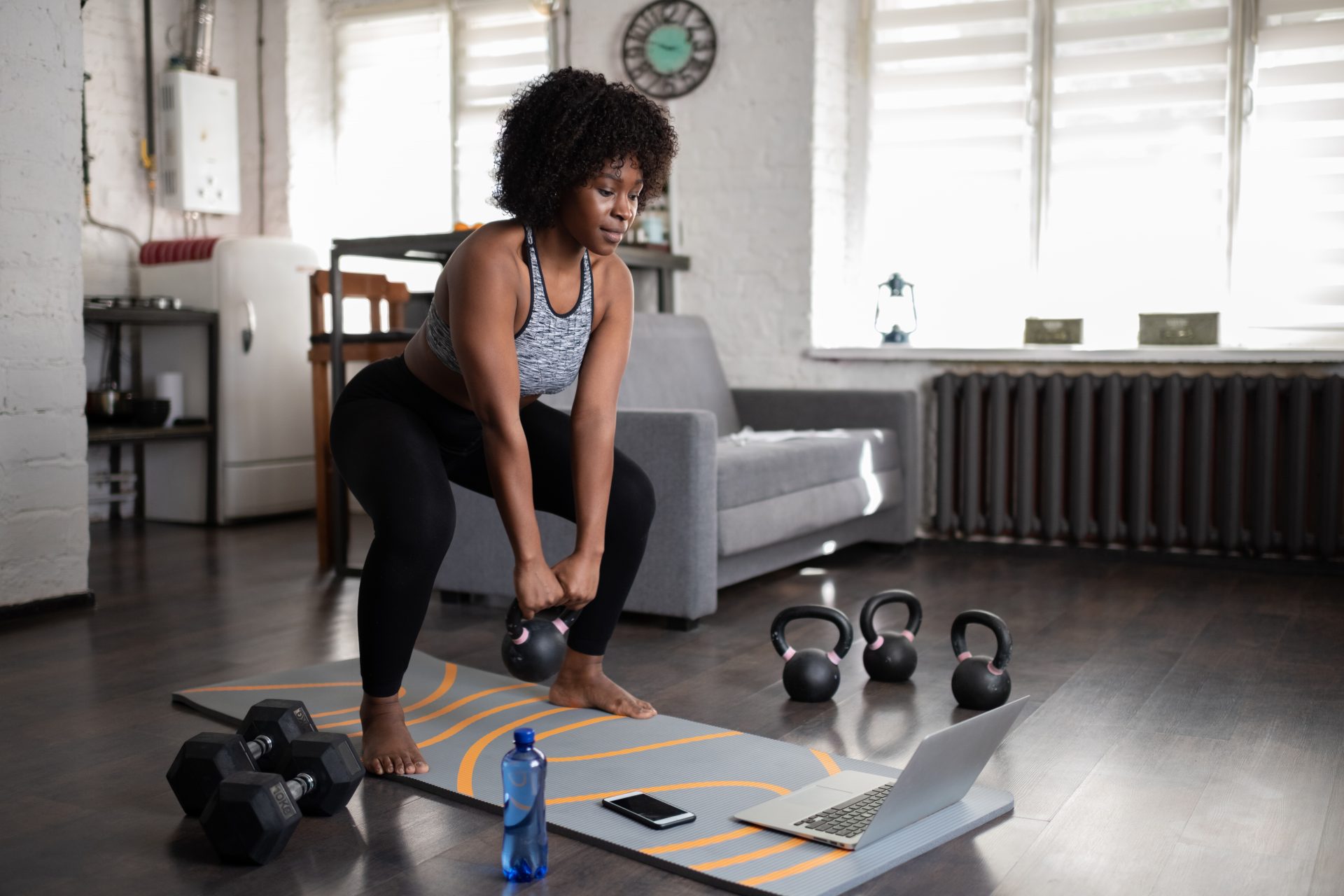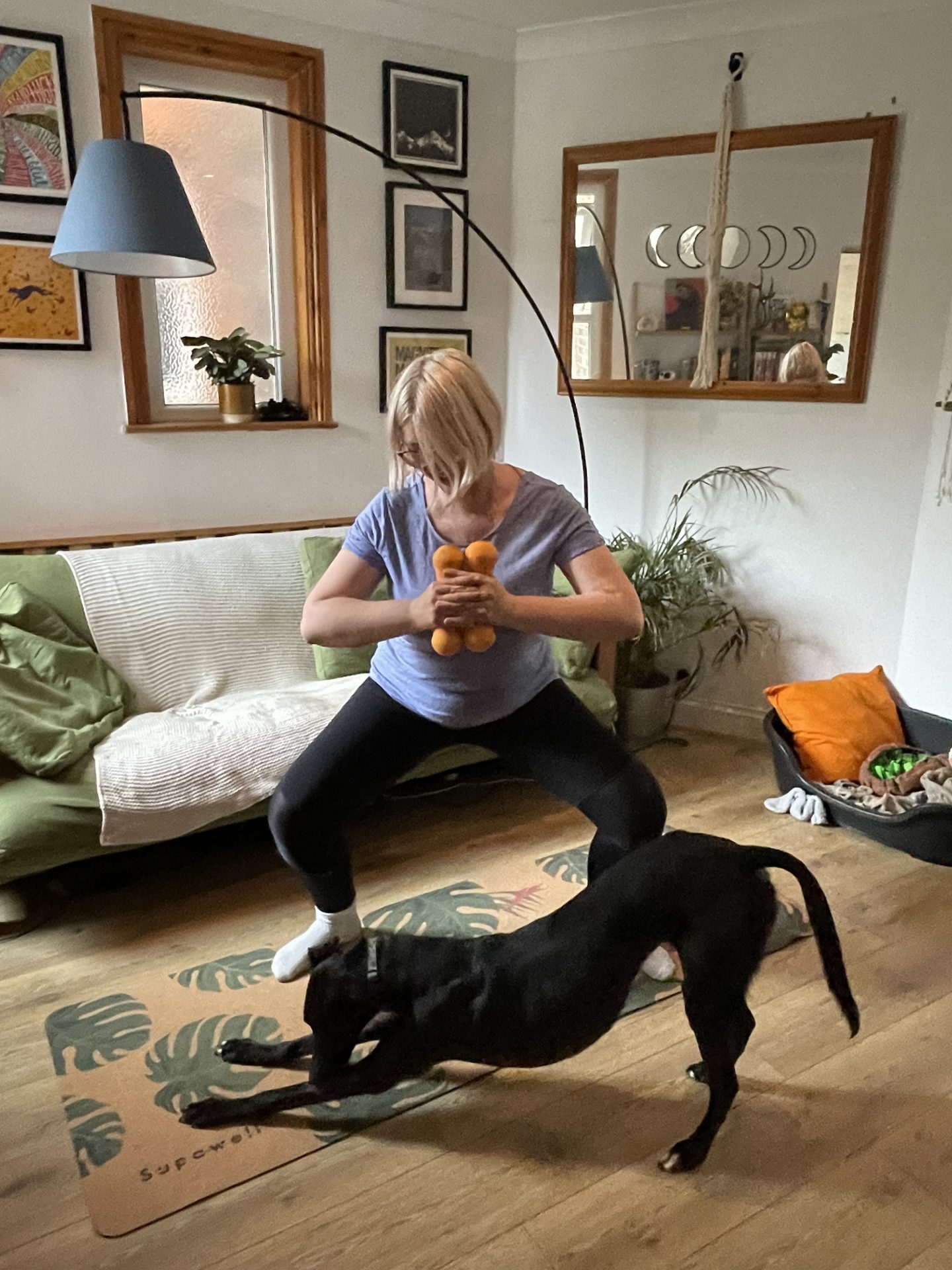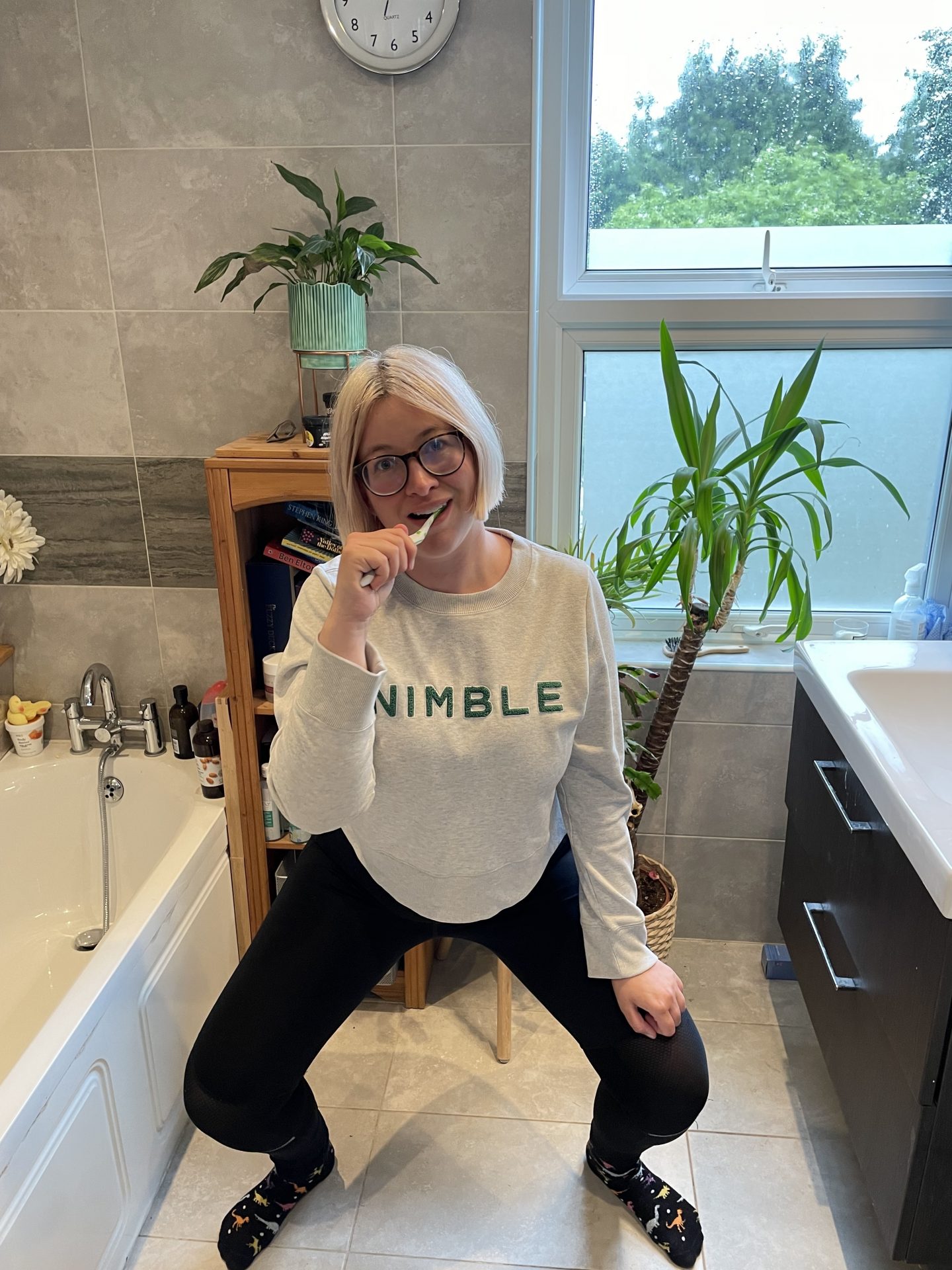Can a beginner really attempt the 100 squats challenge? Absolutely, but with a few moderations…
Like most people, I have something of a love-hate relationship with squats. I get that they’re a necessary evil, helping to build basic strength in the legs, urso de pelucia onde comprar hips and core muscles, but… well, they’re uncomfortable, aren’t they? And, if you do them properly, they make your butt burn like mad after not very long at all – which is the whole point of them, I guess.
When I saw people tweeting about the so-called 100 squats challenge, then, I was intrigued – in a sort of sadomasochistic way, I guess. 100 squats a day? 100 squats every single day? Surely these people would wind up falling to the floor, Bridget Jones-style, after the second day (third day at a push), unable to stand, let alone continue squatting like mad for a month.
“It sounds like absolute torture,” I joked, during one of our morning news meetings. But then I saw our fitness editor’s eyes light up, and I realised I’d made a terrible mistake in bringing it up.

Reader, you guessed it; before I knew it, I was signed up to tackle a 100 squats challenge of my very own. Unlike so many people on social media, however, I wouldn’t be doing 100 of the damned things a day; in fact, Stylist Strong’s Emma Obayuvana was firmly against me even attempting such a feat.
“100 squats a day for a month?” she said, when I put the social media challenge to her over the phone.
“I wouldn’t advise doing this because 100 squats a day, every day, will put so much pressure on your knee joints and your muscles. Even if you split them up throughout your day, the volume of squats that you’re going to get through means that you’ll wind up overtraining –not to mention the fact there’s a high risk of injury involved.”
You may also like
Strength training: 6 of the best squat variations for glutes, quads, hips and endurance
“I recommend adapting this challenge so you end up doing 100 squats a week,” Emma continued, “as this will give your body plenty of time to rest and recover and build stronger muscles, and you’ll end up doing 33 squats or so three times a week.
“That means you’re going to have a really nice leg day routine for every single week of the month, which is perfect because that’s how you should be training anyway.”
You will see tangible development at the end of the month”
What is the beginners’$2 100 squats challenge?
Emma designed a brilliant routine for me, which she asked me to attempt three times a week (factoring in at least one rest day between each session).
“Three sets of 11 (or 12) squats a week is so doable,” she explained. “But I would advise doing different squat variations to keep it interesting, target different muscle groups, and keep yourself engaged.
“Just please don’t do three days of squats in a row; space them out across the week – maybe on a Monday, a Wednesday, and a Friday? You will see tangible development at the end of the month; stronger legs, and I guarantee you’ll feel the difference.”
The routine looks a little something like this, if you’re interested:
- 11 x goblet squats
- 10-second plank
- 11 x sumo squats
- 10-second plank
- 12 x heel-raised squats
- 10-second plank
For those who need a little further information on each of those squat types…
The basic squat (or ‘air squat’)
The idea of the basic squat is to take yourself from a standing to a seated position, essentially, and avoid letting your knees track further than your toes as you bend down. You should focus on hinging at the hips and sitting back into the squat position, rather than bending forward into your knees.
Stylist has a brilliant guide on how to do a squat correctly, if you’re interested.
The goblet squat
A goblet squat involves holding a free weight, such as a kettlebell, at the front of your body.
The heel-raised squat
As the name suggests, this squat involves elevating your heels – I used a shallow step in my kitchen, but I’ve been told a few books would do the trick just as well – and then, keeping your knees together, tackling the classic squat.
The sumo squat
My favourite squat (who knew there was such a thing?), this twist on the old classic sees you taking your legs wide and slightly turning your feet out to give a ‘sumo’ stance to the exercise.
The plank
Look, we all know the horrors of the plank at this point; lie face down, keep your body parallel to the floor, and then push your bodyweight up so that it’s resting on your forearms and feet. The trick is to engage your abdominal muscles (by drawing your navel toward your spine), and maintain that straight back.
Just like this, essentially:
Emma suggested that I attempt 10-second planks between each set of squats to help give me a full body workout, and advised that I build up the length of time I spent planking as the month went on.
Reader, I may have forgotten to increase the time spent planking. For shame. But I’ve gotten really, really, really good at the 10-second plank as a result, and isn’t that still an achievement?
What are the benefits of the 100 squats challenge?
When done correctly, a good set of squats doesn’t just strengthen the muscles of your lower body; it also strengthens your core, too. And, for people who are far more energetic than I am, they can also help to minimise injuries in other sports. Why? Because the move strengthens the tendons, bones, and ligaments around your leg muscles, and can help take some of the load off your knees and ankles, according to a 2010 Journal of Strength and Conditioning Research article.
The 100 squats challenge: week one
As soon as I learn I don’t have to do 100 squats a day, I feel wildly optimistic about this challenge. And, weirdly, I find myself getting into it in a big way; on the first day, I tackle my exercises in the living room during my lunchbreak, using the little step down into my kitchen for the heel-raised squats. I take it nice and slow (form, not speed, is of the essence here), and feel the burn before too long – in fact, I even get a little red in the face.
You may also like
Yoga for beginners: “Yoga terrifies me, but I tried this 3-week challenge and was stunned by the results”
The next morning, I can feel the burn in my butt, abs, and thighs, and I’m glad to have it as a rest day. As is always the case with DOMS (delayed-onset muscle soreness), however, it burns even more the following day – and I find getting up and down the stairs more of a challenge than normal (spoiler: it’s usually easy as pie).
Still, though, I made a promise, and so I work through the squats routine once again. It actually helps to ease the pain a bit, weirdly. And, when I attempt my third set two days later, the aches and pains in my legs are… well, they’re actually quite pleasant. Is that a weird thing to say? I feel like it is…
The 100 squats challenge: week two
Now that I’ve gotten into the swing of things, I try to boost the speed of my squat sets. The heel-raised squats, weirdly, prove to be the trickiest to nail, form-wise, so I keep those slow and steady. The others, though, feel more familiar; my Kung Fu lessons are big on sumo squats, because it helps prep you for the horse stance (feet pointed forward, thighs parallel to the floor, with the buttocks pushed out, and the back “arched up” to keep the upper body from leaning forward) which you have to adopt for most moves.

In fact, as I’m not allowed to do sit ups or anything similar at the moment (lying flat on your back when you’re pregnant is a big no-no), I wind up working my squats into my weekly Kung Fu class. While everyone else is doing crunches around me, I squat. I squat like mad. And, because everyone else is doing push ups and I feel the tiniest bit guilty about it, I decide to swap one day’s worth of planks for the 55 press-ups from the knee. I’m sure Emma won’t mind…
The 100 squats challenge: week three
I think I’ve become a little bit too casual about the squats at this point, as I find myself doing them while I’m brushing my teeth in the mornings. Or while I’m waiting for the pasta to boil at dinnertime. Or while I’m out walking the dog and there’s nobody around (I prefer to exercise covertly, apparently). Or, y’know, during the warmup phase of my weekly Kung Fu lesson.
You may also like
Fitness challenge: “I tried the 5-minute plank challenge for 3 weeks – this is what happened”
Honestly, I’m loving it; it’s tough, but not too tough – and it’s actually helping with my pregnancy back pain, too. In fact, I sometimes just do a few squats if I wake up with a knot in my lower back, as it helps to ease things out. Win!
The 100 squats challenge: week four
The squats are still proving challenging enough to feel like a workout, but I am definitely a convert – especially as teaming them with the planks (or press ups, depending on where I am) means that my lower legs aren’t the only things getting put through their paces each day. Considering how busy I am with work, they’re completely manageable timewise (like I say, I can fit them in while I’m cooking or watching TV), and they complement my daily dog walks and weekly Kung Fu sessions perfectly.
I’m still finding the heel-raised squats a little tricky, but at least I’m not wobbling all over the place anymore. Could it be that this challenge has helped to improve my terrible balance at last?
The 100 squats challenge: results
Come the end of the month, I’ve got 400 squats under my belt – which doesn’t sound like a lot, I’m sure, but it feels like a massive achievement to me. And, while I’m not going to pretend that I have suddenly gained a so-called “bubble butt,” I will say this; my glutes feel a little firmer than they did before, and I imagine that this will only improve with time.

Considering all of the above, I will absolutely be keeping this routine up for the foreseeable future. In fact, I’ve already begun tweaking it a little; during my Kung Fu sessions, I’m attempting to see how many squats I can do (properly) in a minute, and then doing my best to improve on this number the following week. I’ve been mixing up the planks and press-ups wherever I can, for added variety.
And I’m sometimes throwing in the odd split squat (which involves pressing through just one foot, with the other resting on the floor or bench behind you), just to see if this helps with my balance as well.
Making things more challenging
“If doing 100 squats a week doesn’t feel challenging, break it up over two days,” says Emma. “Try 50 squats a day over two days, maybe? Break them up into sets of 10 or 12, and make sure to keep bookending them with other exercises, such as planks, to give yourself some active rest time.”
Building up to that all-important 100 squats a day
100 squats a week is all well and good, but is it possible to ever build up to 100 squats a day? Stylist’s Miranda Larbi says absolutely!
“If doing 100 squats a day is a goal of yours, it’s best to slowly increase over a decent chunk of time to give your body a chance to adapt without the risk of injury,” she says.
“Increase your rep range by two every week until you eventually hit that 100 squat mark. And, again, be sure to leave rest days in between each session.”
Images: Getty/author’s own
Source: Read Full Article
